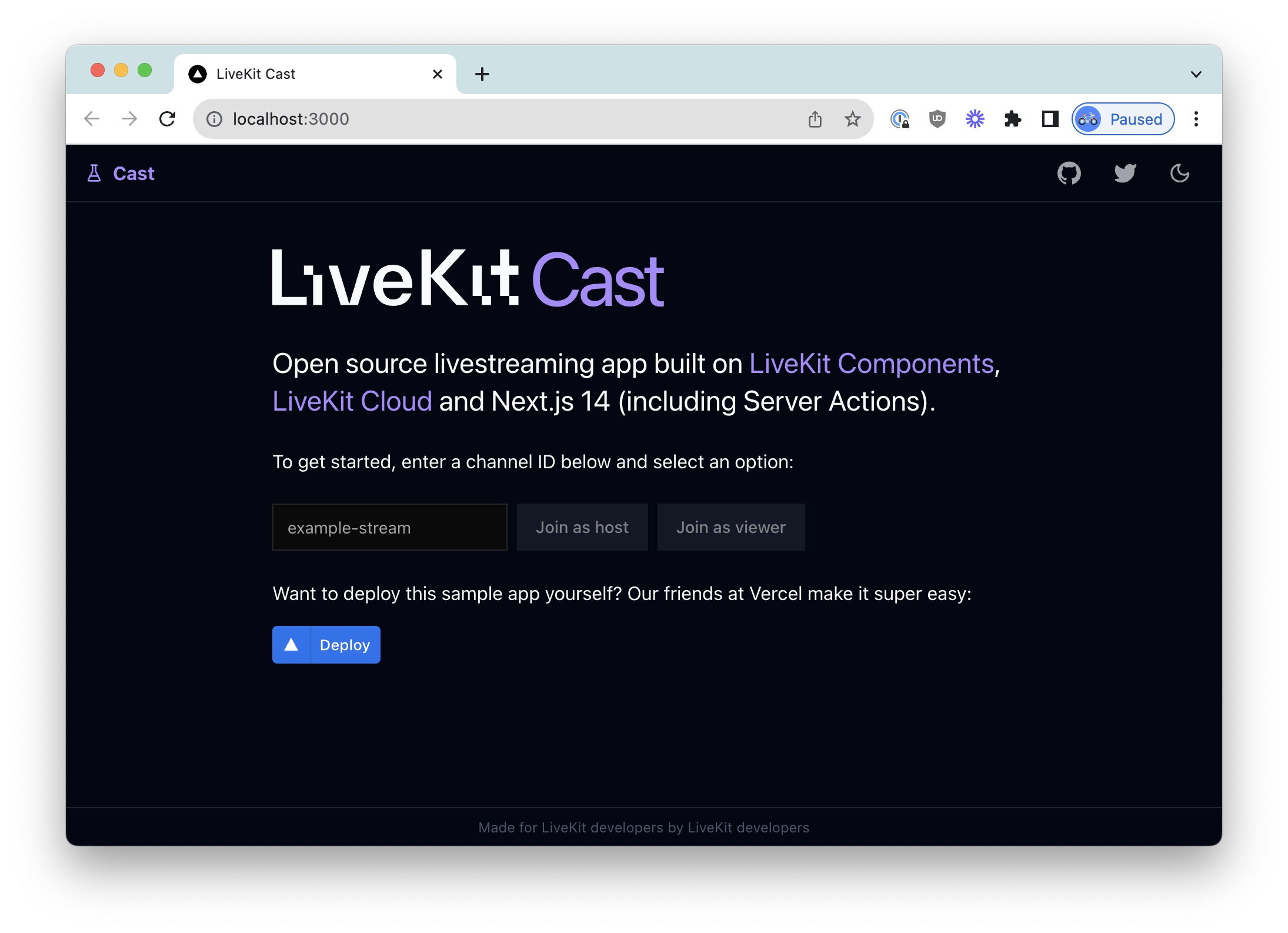The useChat hook
LiveKit provides a simple abstraction on top of its Data Channels to help you incorporate chat into your web app.
Within a <LiveKitRoom> context, simply import our useChat React hook into your component:
import { useChat } from '@livekit/components-react'export default function Chat() {const { messages, send, isSending } = useChat();...}
useChat provides an object with 3 properties to manage your chat component:
messages- provides an array ofChatMessageobjects that each have the properties:timestamp- when the message was sentfrom- information about the Participant who sent the message (e.g. identity)message- the message content provided as a JavaScript String
send- a function that takes a string input and takes care of publishing the message to all recipients in the RoomisSending- a boolean value that determines if the last message sent is currently in flight
A complete example

Our livestream demo app is open-source and illustrates how you may want to add chat to your React application. It implements a standard chat UI using the above React hook and Tailwind for styling. You can take a look at the source here.
And in case you wanted an out-of-the-box experience
The LiveKit team has provided prefabricated UI components as part of the @livekit/components-react library. Included is the prefabricated <Chat> component that you can drop into your <LiveKitRoom> context. Ensure that you have installed the @livekit/components-styles library and write some code like below:
import { Chat } from "@livekit/components-react";import '@livekit/components-styles';export default function Room() {return (<LiveKitRoom data-lk-theme="default"><Chat /></LiveKitRoom>)}
To read more about styling our prefabricated components, refer to our documentation here.
Notes
- Message history is not persisted and will be lost if the component is refreshed. You may want to persist message history in the browser, a cache or a database.